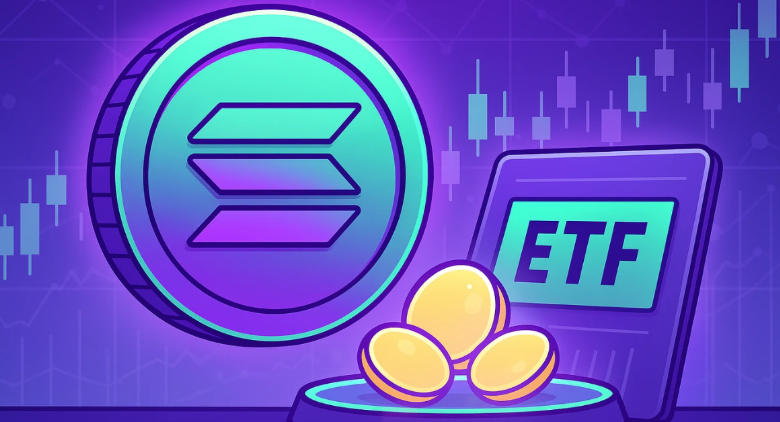Exploring Solana ETF: A Revolutionary Step for Blockchain Investment

1. Introduction
Blockchain technology has made tremendous strides over the past decade, with various cryptocurrencies and platforms emerging as pivotal players in this new digital financial ecosystem. Solana, a high-performance blockchain, has emerged as one of the top contenders in this space, promising rapid transaction speeds and low fees. Now, with the advent of a Solana Exchange-Traded Fund (ETF), the landscape of blockchain investments is undergoing a revolution.
A Solana ETF combines the growing popularity of Solana’s blockchain with the investment potential offered by ETFs, providing a unique, low-barrier entry point for traditional investors into the world of cryptocurrency and blockchain technology. In this article, we explore the significance of Solana ETF, its working mechanism, its benefits, and its potential impact on the blockchain and investment landscapes.
2. What is Solana and Why Does It Matter?
Solana is a blockchain platform designed to offer high throughput and scalability, making it one of the fastest-growing blockchain ecosystems. It was built to overcome the scalability issues faced by older blockchains, such as Bitcoin and Ethereum, while maintaining a high degree of decentralization and security.
Solana uses a unique consensus mechanism known as Proof of History (PoH), which helps speed up transactions by timestamping them before they are processed by the network. This allows for faster and more efficient processing, making Solana ideal for decentralized applications (dApps), decentralized finance (DeFi), and other blockchain-based solutions.
Solana’s popularity has surged due to its low transaction costs, high scalability, and vibrant ecosystem, which has led to increased interest from both developers and investors.
3. Understanding ETFs in the Context of Blockchain
An Exchange-Traded Fund (ETF) is a financial product that allows investors to pool their money to invest in a range of underlying assets, such as stocks, bonds, commodities, or cryptocurrencies, without directly owning the assets themselves. ETFs are traded on stock exchanges, making them easily accessible to both institutional and retail investors.
In the blockchain and cryptocurrency context, blockchain ETFs offer a way for investors to gain exposure to blockchain technology without directly purchasing and managing digital currencies like Bitcoin or Ethereum. Instead, these ETFs hold assets related to blockchain companies or cryptocurrencies, providing a more diversified and less risky investment vehicle.
4. The Rise of Blockchain ETFs
Blockchain ETFs represent a growing trend in the financial industry as more institutional and retail investors are seeking exposure to blockchain technology without the complexity of directly investing in digital assets. With the rise of Bitcoin and Ethereum ETFs, the spotlight has now turned to other blockchain platforms like Solana.
The Solana ETF is part of this movement, reflecting the increasing demand for blockchain-based investment vehicles. This surge in blockchain ETFs indicates a broader acceptance of cryptocurrencies and blockchain technology as legitimate and profitable investment opportunities.
5. Solana ETF: Key Features and Benefits
The Solana ETF allows investors to gain exposure to the Solana blockchain without needing to buy and store Solana’s native token (SOL) directly. Here are some of the key features and benefits of investing in a Solana ETF:
- Diversification: By investing in a Solana ETF, investors gain exposure to a basket of assets related to Solana, such as Solana tokens, Solana-based DeFi projects, and other ecosystem-related investments.
- Ease of Access: ETFs are traded on traditional stock exchanges, making them accessible to investors who are unfamiliar with cryptocurrency exchanges and wallets.
- Lower Risk: Solana ETFs offer a way to mitigate the risks of direct cryptocurrency investments by offering diversification and professional management.
- Regulation and Transparency: ETFs are regulated by financial authorities, offering a higher degree of transparency compared to unregulated cryptocurrency investments.
6. How Does a Solana ETF Work?
A Solana ETF functions similarly to other ETFs. It is managed by a fund manager who oversees the investments in Solana-related assets, including Solana tokens and companies that utilize the Solana blockchain. The ETF may hold a variety of assets within the Solana ecosystem, providing a diversified portfolio for investors.
The value of the Solana ETF is linked to the performance of the Solana blockchain and its associated assets. Investors purchase shares in the ETF, and these shares are traded on stock exchanges, allowing investors to buy and sell them just like traditional stocks.
7. Investment Opportunities with Solana ETF
The Solana ETF presents a range of investment opportunities, including:
- Solana Token Exposure: Investors gain exposure to Solana’s native cryptocurrency (SOL), which is used for transaction fees, staking, and governance within the Solana network.
- DeFi and dApps: The ETF may invest in decentralized finance (DeFi) projects or decentralized applications (dApps) that operate on the Solana blockchain, tapping into the growing DeFi space.
- Solana-Based Companies: The ETF may also hold stocks or equity in companies that are building on the Solana network or providing services related to Solana, such as infrastructure and development tools.
8. Solana ETF vs. Traditional Cryptocurrencies
Solana ETFs offer a unique proposition compared to traditional cryptocurrencies. Here’s how they differ:
| Feature | Solana ETF | Traditional Cryptocurrencies |
|---|---|---|
| Accessibility | Traded on stock exchanges, easily accessible | Requires cryptocurrency exchanges and wallets |
| Regulation | Regulated financial product | Largely unregulated in many jurisdictions |
| Diversification | Exposure to a range of assets within the Solana ecosystem | Single asset exposure (e.g., SOL) |
| Risk | Lower risk due to diversification and professional management | Higher risk due to volatility and lack of diversification |
9. Advantages of Solana ETF Over Traditional Blockchain Assets
Solana ETFs offer several advantages over investing directly in Solana tokens or other blockchain assets:
- Lower Volatility: Due to the diversified nature of ETFs, they tend to experience less volatility than individual cryptocurrencies.
- Simplified Investment Process: Investors do not need to manage their own cryptocurrency wallets or deal with exchanges.
- Legal Protections: Solana ETFs are regulated, offering protections that individual crypto investors might not have.
10. Risks and Challenges of Solana ETFs
Like any investment, Solana ETFs come with their risks, including:
- Market Risk: The value of the Solana ETF is tied to the performance of the Solana ecosystem and the broader cryptocurrency market.
- Regulatory Risk: As the crypto space is still evolving, regulatory changes could impact the value and operation of Solana ETFs.
- Liquidity Risk: While ETFs are traded on stock exchanges, their liquidity can fluctuate depending on market conditions and investor interest.
11. The Future of Blockchain Investment with Solana ETFs
As blockchain technology continues to evolve, Solana ETFs could play a significant role in how investors approach blockchain investments. The potential for mass adoption of Solana-based projects, along with the growing interest in blockchain ETFs, makes this an exciting time for investors.
12. Regulatory Considerations for Solana ETF
One of the major factors influencing the success of Solana ETFs will be the regulatory environment. Governments worldwide are beginning to establish clearer rules around cryptocurrencies and blockchain technologies. The Solana ETF will need to comply with these regulations to ensure investor protection and market stability.
13. How Solana ETF Can Impact the Crypto Market
By offering an easy entry point for traditional investors, Solana ETFs could bring more institutional capital into the crypto market, potentially stabilizing prices and reducing volatility in the long term.
14. How to Invest in Solana ETF
Investing in a Solana ETF is similar to purchasing shares in a traditional ETF. Simply open a brokerage account, research the available Solana ETFs, and place your order. Remember to consider the fees, risk factors, and the fund’s performance before investing.
15. Frequently Asked Questions (FAQs)
- What is the Solana ETF?
- The Solana ETF is an investment fund that provides exposure to Solana-related assets, such as Solana tokens and blockchain-based companies.
- How does a Solana ETF work?
- A Solana ETF is managed by a fund manager and holds a variety of assets related to the Solana blockchain, allowing investors to buy shares on stock exchanges.
- What are the risks of investing in Solana ETFs?
- Risks include market volatility, regulatory changes, and liquidity concerns.
- Can I trade Solana ETFs on traditional stock exchanges?
- Yes, Solana ETFs are traded on stock exchanges, just like traditional stocks.
- Is Solana a good investment?
- Solana offers promising technology and growth potential, but like all investments, it carries risk. Investors should do thorough research.
- How can I invest in Solana ETFs?
- Open a brokerage account, choose a Solana ETF, and place an order to buy shares.
16. Conclusion
The Solana ETF represents a significant step forward in making blockchain investments more accessible to mainstream investors. By combining the power of Solana’s blockchain with the benefits of ETFs, investors can gain exposure to a rapidly growing ecosystem with a lower risk profile. While there are risks involved, the potential for growth and diversification makes Solana ETFs an exciting option for those looking to participate in the blockchain revolution.




